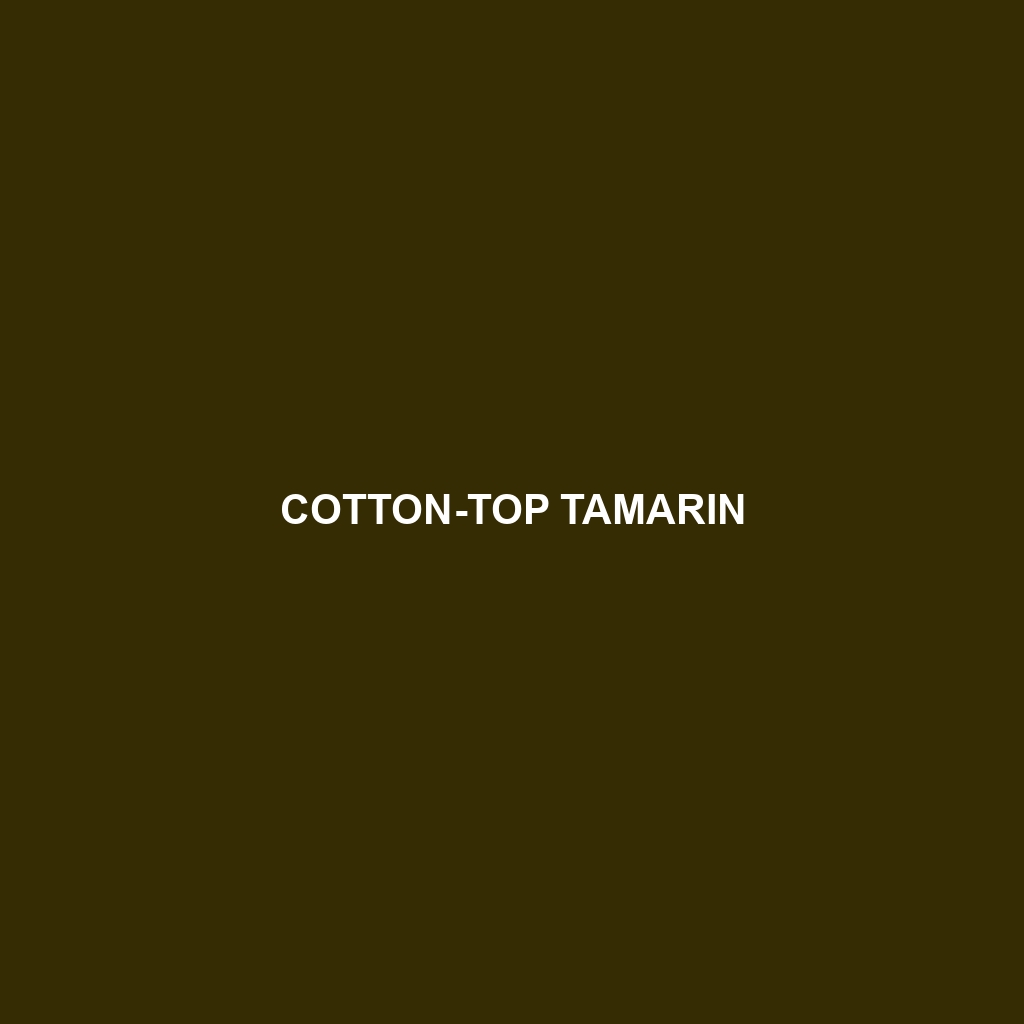Cotton-top Tamarin: An Overview
Common Name: Cotton-top Tamarin
Scientific Name: Saguinus oedipus
Habitat
The Cotton-top Tamarin primarily inhabits the tropical rainforests of Colombia. These small primates are mostly found in the lowland forests and edges of the Caribana region, particularly in areas with dense vegetation near rivers and streams. They prefer environments that provide abundant trees for climbing and foraging.
Physical Characteristics
Cotton-top Tamarins are distinctive for their small size, typically weighing between 0.45 to 0.9 kg (1-2 lbs) and measuring around 25-30 cm (10-12 inches) in body length. Their most notable feature is the prominent tuft of white hair atop their head, resembling a cotton ball, which contrasts sharply with their dark brown to black fur. They have expressive faces with a slight beard and large, round eyes that lend them an inquisitive appearance.
Behavior
These monkeys are highly social creatures that live in small family groups of 2 to 13 individuals. Cotton-top Tamarins are diurnal, meaning they are active during the day, and they exhibit a range of vocalizations to communicate with one another. Their playful nature often leads them to engage in acrobatic displays and grooming rituals, which strengthen social bonds within the group.
Diet
The diet of the Cotton-top Tamarin is primarily insectivorous, but they also consume a variety of fruits, flowers, and tree sap. They play a vital role in their habitat by assisting in seed dispersal and pollination, making them significant contributors to the health of their ecosystem. Their feeding habits are adapted to target both nectar and fruit from various tree species.
Reproduction
Cotton-top Tamarins typically breed once a year, with a gestation period of around 140 days. Mothers usually give birth to twins, which is a common trait among tamarins. The entire group participates in caring for the offspring, with older siblings often helping to look after the younger ones. This communal care enhances the survival rate of the young.
Conservation Status
The Cotton-top Tamarin is currently classified as Critically Endangered by the International Union for Conservation of Nature (IUCN). Habitat destruction due to deforestation, agricultural expansion, and illegal pet trade pose significant threats to their survival. Conservation efforts are underway to protect their remaining habitats and restore their populations in the wild.
Interesting Facts
– Cotton-top Tamarins are named for their unique tufts of hair, which are a hallmark feature of the species.
– These primates are excellent climbers, able to leap distances of up to 3 meters (9.8 feet) between trees.
– Conservation programs are working to raise awareness and funds to protect these unique creatures and their habitat.
Role in Ecosystem
Cotton-top Tamarins play a crucial role in their ecosystem by contributing to seed dispersal and aiding in the regeneration of forest vegetation. Their feeding behaviors help maintain biodiversity as they consume fruits and nectar, facilitating the growth of various plant species. Their presence is indicative of a healthy rainforest ecosystem, and their decline can have ripple effects on the entire ecological community.
